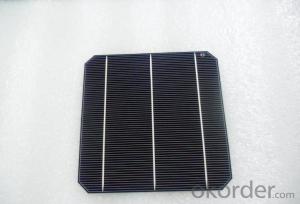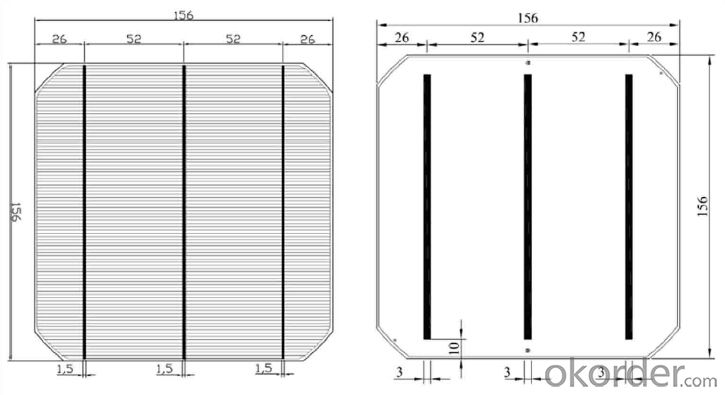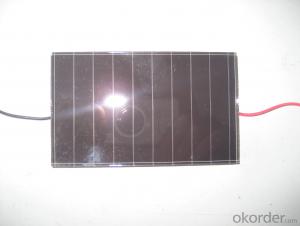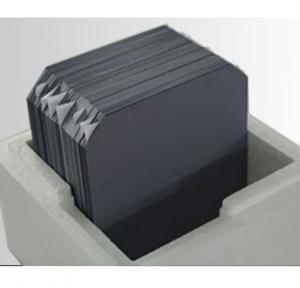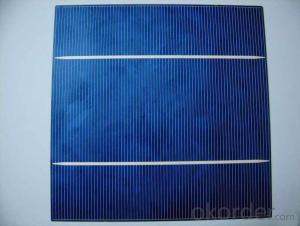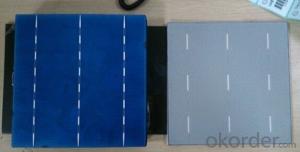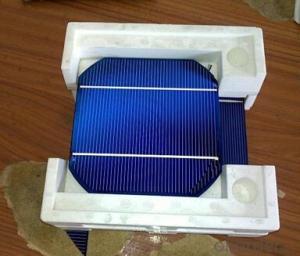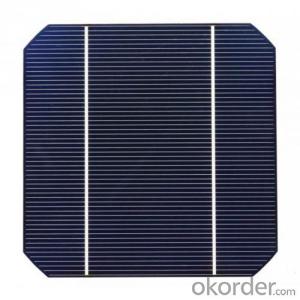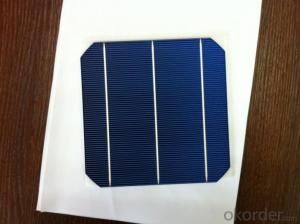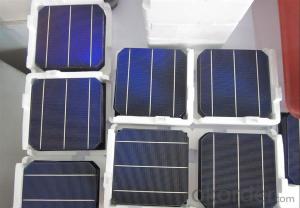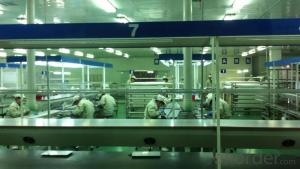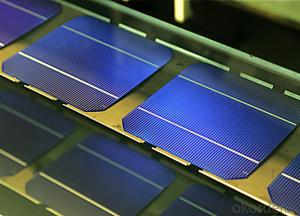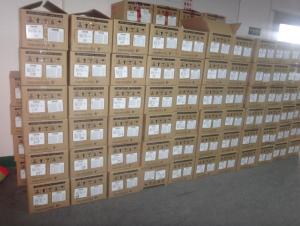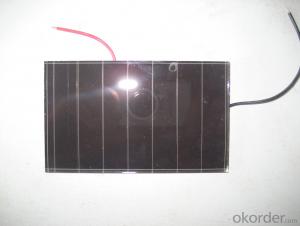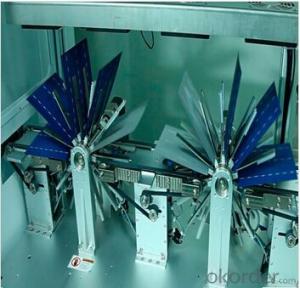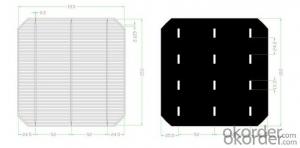Solar Silicon Wafer Carrier Suppliers - Mono Solar Cells 156mm*156mm in Bulk Quantity Low Price Stock 18.8
- Loading Port:
- Shanghai
- Payment Terms:
- TT OR LC
- Min Order Qty:
- 1000 pc
- Supply Capability:
- 100000 pc/month
OKorder Service Pledge
OKorder Financial Service
You Might Also Like
Brief Introduction
- Up to 20.0% efficiency, one of the highest performing mono crystalline cells on the market
- Three bus bars boosts current collection over the entire cell area, leading to higher fill factors
- Blue anti-reflecting coating allows more sunlight be captured and converted to electricity
- Finer, closer fingers improves charge collections for improved energy yield
- Lower light-induced degradation leads to greater power output over the entire module lifetime
- All solar cells are tightly classified to optimize output of module
- Maximum yield and longevity due to hotspot prevention
- Premium appearance results in a highly uniform and aesthetically appealing module
Specification
- Product Mono-crystalline silicon solar cell
- Dimension 156 mm x 156 mm ± 0.5 mm
- Thickness 200 μm ± 30 μm
- Front 1.5 ± 0.1 mm busbar (silver)
- Silicon nitride antireflection coating
- Back 3.0 mm continuous soldering pads (silver)
- Back surface field (aluminum)
Electric performance parameters

- Testing conditions: 1000 W/m2, AM 1.5, 25 °C, Tolerance: Efficiency ± 0.2% abs., Pmpp ±1.5% rel.
- Imin : at 0.5 V
Light Intensity Dependence
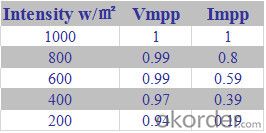
Soldering Ability
- Peel Strength: > 1.0 N/mm (Pull soldered ribbon from busbar in 5 mm/s of 180°)
Dimension Figure

Quick Response
- Any time and anywhere, reply clients' email and solve all problems happen in the work at the first time.
- Remove clients doubts and offer the best solution at the first time.
- Give our clients the lastest news of the photovoltaic, update the newest stock informtion.
Production and Quality Control
- Precision cell efficiency sorting procedures
- Stringent criteria for color uniformity and appearance
- Reverse current and shunt resistance screening
- ISO9001,ISO14001 and OHSAS 18001,TUV Certificated


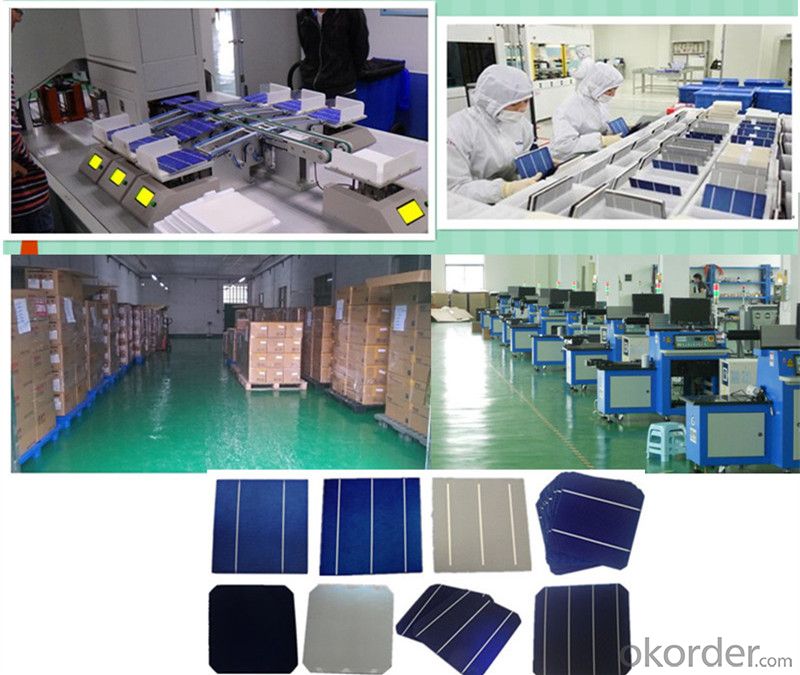
FAQ:
1. Q: Do you have your own factory?
A: Yes, we have. Our factory located in Jiangsu
2. Q: How can I visit your factory?
A: Before you visit,please contact us.We will show you the route or arrange a car to pick you up.
3. Q: Do you provide free sample?
A: Commenly we provide paid sample.
4. Q: Could you print our company LOGO on the nameplate and package?
A: Yes, we accept it.And need an Authorization Letter from you.
5. Q: Do you accept custom design on size?
A: Yes, if the size is reasonable.
6. Q: How can I be your agent in my country?
A: Please leave feedback. It's better for us to talk about details by email.
7. Q: Do you have solar project engineer who can guide me to install system?
A: Yes, we have a professional engineer team. They can teach you how to install a solar system.
- Q: Are solar silicon wafers susceptible to cracking?
- Yes, solar silicon wafers are susceptible to cracking.
- Q: How does the temperature affect the performance of a solar silicon wafer?
- The temperature directly affects the performance of a solar silicon wafer. Higher temperatures can cause an increase in resistance within the wafer, leading to a decrease in efficiency and power output. Additionally, excessive heat can accelerate the degradation of the materials used in the wafer, reducing its lifespan. Therefore, maintaining lower temperatures is crucial for optimal performance and longevity of a solar silicon wafer.
- Q: What is the purpose of surface texturing in solar silicon wafers?
- The purpose of surface texturing in solar silicon wafers is to increase the efficiency of solar cells by reducing reflection and maximizing light absorption.
- Q: How is the purity of silicon determined for solar wafers?
- The purity of silicon for solar wafers is determined through various analytical techniques such as mass spectrometry, spectroscopy, and resistivity measurement. These methods help identify and quantify impurities like metals, oxygen, carbon, and other elements that may affect the efficiency and performance of the solar cells. Additionally, advanced purification processes are employed to ensure the highest level of purity, resulting in highly efficient solar wafers for photovoltaic applications.
- Q: Can solar silicon wafers be used in off-grid solar applications?
- Yes, solar silicon wafers can be used in off-grid solar applications. These wafers are the key component in solar panels, which convert sunlight into electricity. Off-grid solar systems rely on solar panels to generate power in remote locations or areas without access to the conventional power grid.
- Q: How do solar silicon wafers perform in high rainfall regions?
- Solar silicon wafers perform well in high rainfall regions as rainwater helps in cleaning the surface, resulting in improved efficiency and performance. Additionally, the smooth surface of silicon wafers prevents water from accumulating, reducing the risk of damage or short-circuiting. However, it is important to note that regular maintenance and cleaning might be required to ensure optimal performance in such regions.
- Q: Can solar silicon wafers be used in solar-powered satellites?
- Yes, solar silicon wafers can indeed be used in solar-powered satellites. These wafers are commonly used in the manufacturing of solar cells, which are essential components of solar panels. Solar cells convert sunlight into electricity, making them ideal for powering satellites in space where solar energy is abundant.
- Q: How are solar silicon wafers etched to enhance light absorption?
- Solar silicon wafers are etched to enhance light absorption by using a chemical process called texturization. In this process, a mixture of acids is applied to the surface of the wafers, which creates tiny pyramid-like structures. These structures help to scatter and trap light within the material, increasing the chances of its absorption. This etching technique, known as black silicon, significantly improves the efficiency of solar cells by maximizing light absorption and reducing reflection.
- Q: What is the effect of power output on the performance of a solar silicon wafer?
- The power output of a solar silicon wafer directly impacts its performance. Higher power output indicates that the wafer can generate more electricity, leading to increased efficiency and effectiveness in converting sunlight into usable energy. A higher power output allows for greater electricity generation and better overall performance of the solar silicon wafer.
- Q: What are the main factors that affect the cost of a solar silicon wafer?
- The main factors that affect the cost of a solar silicon wafer include the price of raw materials, such as silicon, which is the primary component of the wafer. The manufacturing process and the technology used also play a significant role in determining the cost. Additionally, economies of scale, market demand, and competition within the industry impact the overall pricing of solar silicon wafers.
Send your message to us
Solar Silicon Wafer Carrier Suppliers - Mono Solar Cells 156mm*156mm in Bulk Quantity Low Price Stock 18.8
- Loading Port:
- Shanghai
- Payment Terms:
- TT OR LC
- Min Order Qty:
- 1000 pc
- Supply Capability:
- 100000 pc/month
OKorder Service Pledge
OKorder Financial Service
Similar products
Hot products
Hot Searches
Related keywords
